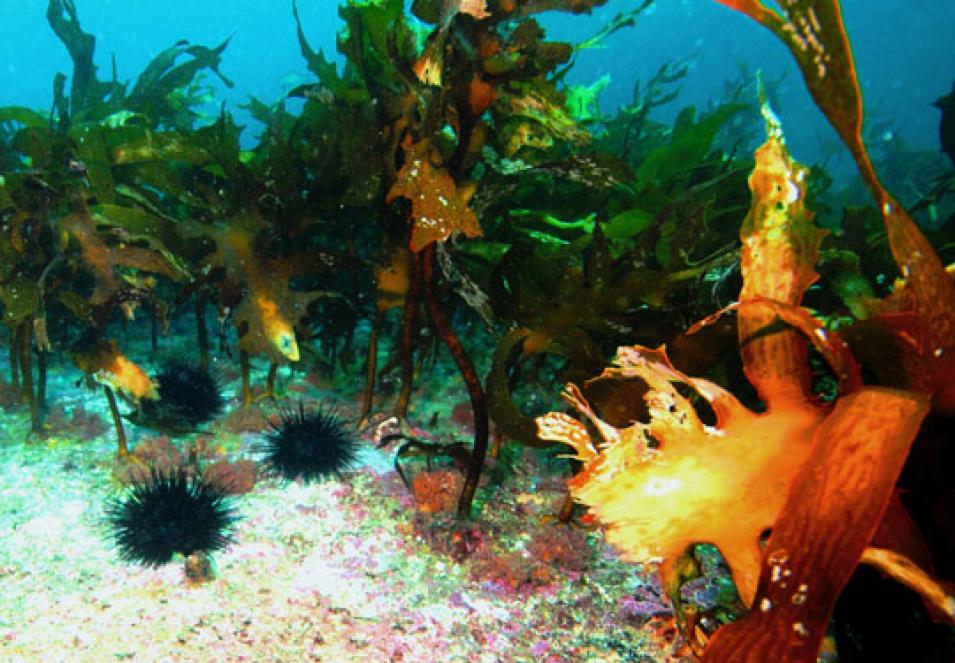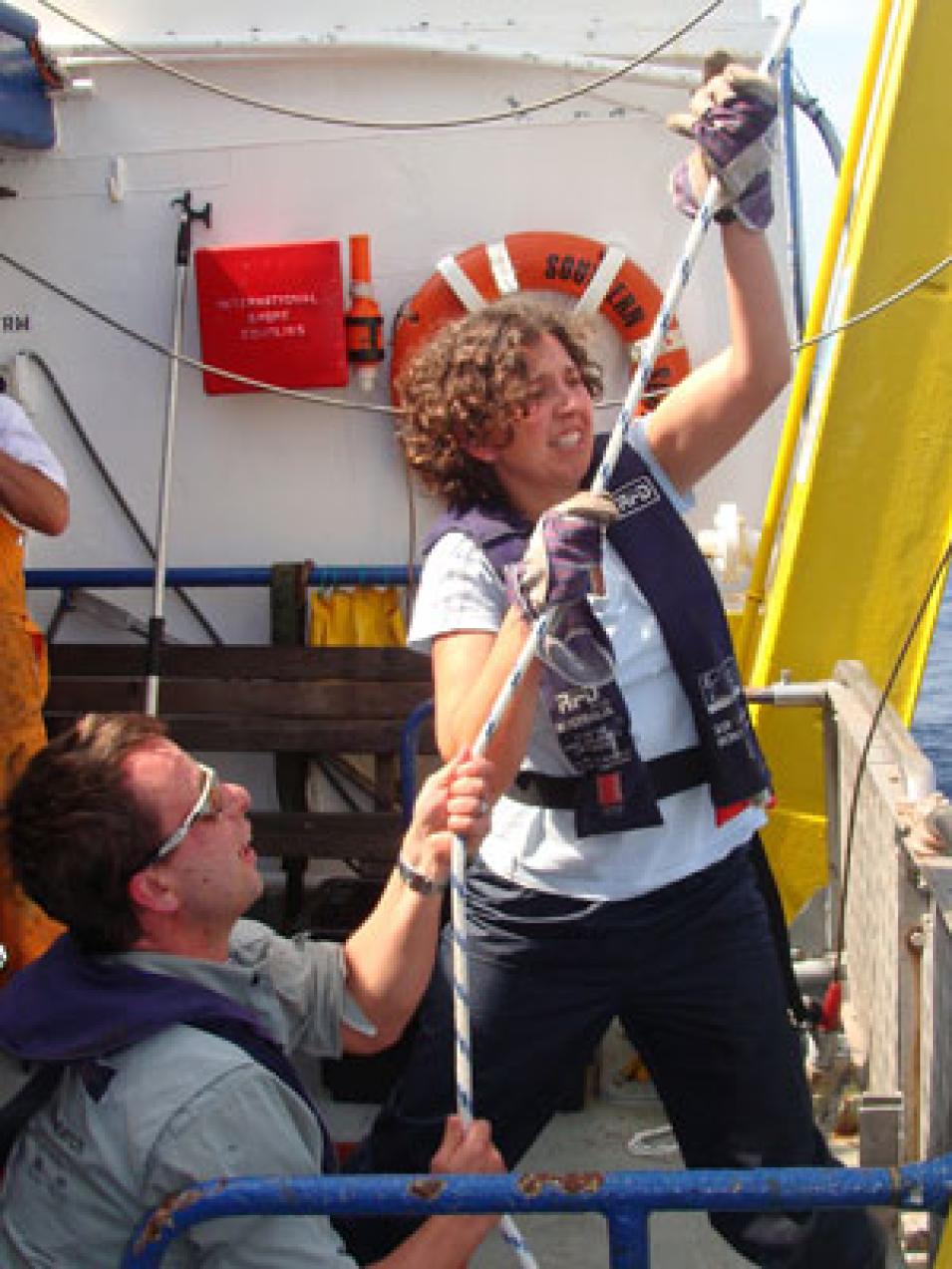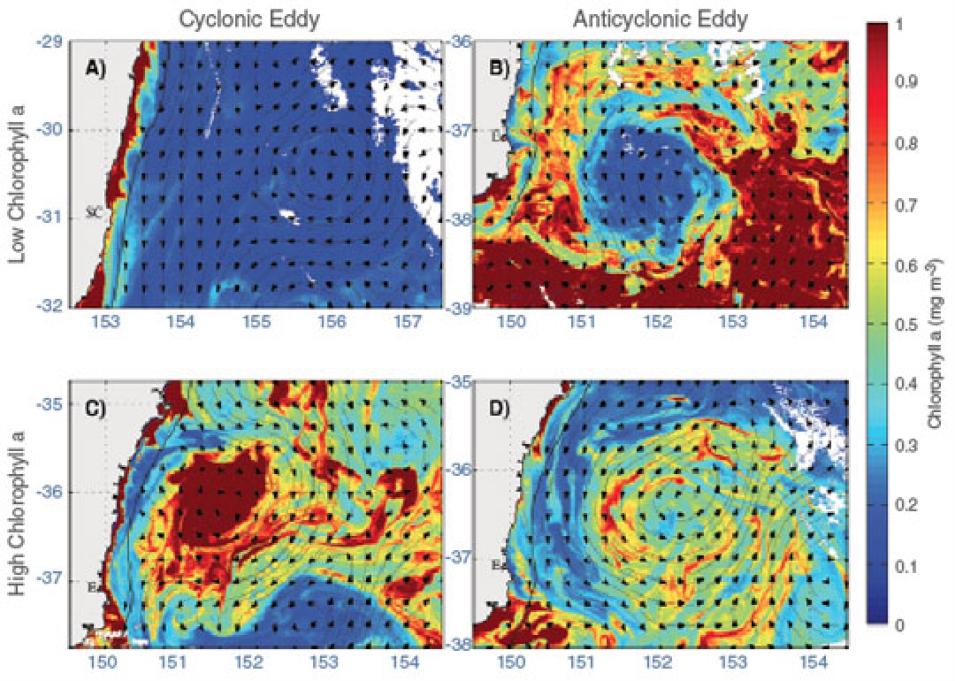Eddy Avenue helps shed light on the migration of species out of their usual bounds. As key players in heat transportation, eddies provide nutrients for phytoplankton, photosynthesizing microscopic organisms, often green from the chlorophyll pigment present in their cells. Not all eddies do this, however. Two types exist: cyclonic and anticyclonic. The centers of cyclonic eddies dimple the ocean surface. The direction an eddy swirls depends on the hemisphere. In the southern hemisphere, clockwise rotation pulls deep water up the center, forming a cold depression of higher density water. The upwelling brings nutrients, submerged as decayed organic matter, into the light zone where it can be used by phytoplankton for growth and reproduction. “These cyclonic eddies are really the basis of the food chain,” Suthers said.
Down under, anticyclonic eddies dot the ocean like pimples, pulling warm, low-density surface water into their core through a counterclockwise rotation. The differences in height and temperature allowed the team to take a broad look at the Tasman Sea with satellite altimetry and sea-surface temperature (SST) to map the circulation of the eddies. By applying ocean color data, which detects chlorophyll concentrations, they could estimate productivity levels. Green areas are phytoplankton hot zones. Brown and blue represent fallow ocean fields.
Using satellite data from 1993 to 2008, the researchers charted the frequency and quantity of eddies within the Tasman Sea. They identified 30,000 eddies with over half being anticyclonic. The unproductive warm cores were expected to have low chlorophyll, while chlorophyll should have clouded the centers of cyclonic eddies. Sometimes this was the case, but Eddy Avenue complicated matters. “Now we’re starting to understand eddies aren’t simply warm or cold core,” Suthers said.
Eddy chameleon
Sometimes cyclonic eddies had no cold core. As the EAC leaves the coast of Australia and breaks down into eddies, often a trace lingers—a fast slither weaving in and out of eddies. When it comes into contact with a cyclonic eddy, it floods it, capping it with warm water. “The importance here is if you were to look at SST from satellite data, you might not see the cyclonic eddies,” Oke said. “It’s only by pulling other data types, the satellite altimetry and ocean color, that we can go ‘Ah that’s warm, but it’s still a cyclonic eddy.’” Though this has happened before, the researchers had not seen it on this scale.
Suthers said, “Cyclonic eddies are far more involved. If you look at a pair of twins, the big bald twin is the anticyclonic eddy and then you’ve got the cyclonic twin that has a range of colors, sizes, and personalities. They’re far more biologically interesting.” Both types of eddies interact with the continental shelf, but cyclonic eddies are able to entrain nutrient-rich water from the shelf, resulting in higher chlorophyll concentrations. Anticyclonic, for reasons yet undetermined, do not. “We didn’t expect that from the cyclonic eddies,” Everett said. “Our research points to two processes. You get uplifting, but closer to the coast within Eddy Avenue, there’s a second process: the entrainment of shelf water.”
Researchers once considered entrainment as a death trap, believing that when spawned fish were dragged from the coast, they would die. But entrainment provides a nutrient-rich environment with fewer predators. “Larval fish are growing faster and bigger within these smaller, coastal cyclonic eddies,” Everett said. “We’re in a neat position to see this in Eddy Avenue because of the number of eddies.” All eddies propagate to the west. This is partially due to Earth’s rotation. To the west is Australia. So the eddies just bobble there. Bumping up against the coast, they sweep in high-nutrient water, over and over. It is a productive environment—little plankton incubators, if you like. “We have a nutrient source that is self contained, can endure for a long time, and be exploited by different fish populations,” Oke said.


